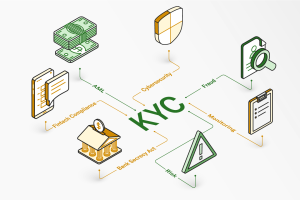
With the increasing reliance on technology and interconnected systems, cybersecurity has become a critical concern for individuals and organizations. This instructional guide aims to provide an overview of common cybersecurity threats and offer prevention measures to help mitigate risks and protect against potential cyber-attacks.
Section 1: Understanding Cybersecurity Threats 1.1 Malware: Malicious software, or malware, includes viruses, worms, ransomware, and spyware. These programs are designed to infiltrate systems, compromise data, and disrupt operations.
1.2 Phishing Attacks: Phishing involves fraudulent emails, messages, or websites that trick individuals into providing sensitive information, such as passwords or credit card details, often by posing as trustworthy entities.
1.3 Social Engineering: Social engineering manipulates human psychology to deceive individuals into divulging confidential information or performing actions that compromise security.
1.4 DDoS Attacks: Distributed Denial of Service (DDoS) attacks overwhelm targeted systems with a flood of traffic, rendering them inaccessible to users and causing service disruptions and financial losses.
Section 2: Prevention Measures for Cybersecurity 2.1 Strong Passwords: Create strong and unique passwords for all accounts, incorporating a combination of uppercase and lowercase letters, numbers, and special characters. Consider using a password manager to store and manage passwords securely.
2.2 Software Updates and Patches: Regularly update operating systems, software applications, and firmware on devices to ensure they have the latest security patches, protecting against known vulnerabilities.
2.3 Secure Network: Protect your home or organizational network using encryption (WPA2 or WPA3) and changing default router passwords. Consider implementing a firewall and a virtual private network (VPN) for secure remote access.
2.4 Email and Phishing Awareness: Exercise caution when opening email attachments or clicking on links. Verify the legitimacy of emails and websites before providing sensitive information. Enable email filters and anti-phishing software.
2.5 Employee Training and Awareness: Educate employees on cybersecurity best practices, including recognizing phishing attempts, avoiding suspicious downloads, and adhering to organizational security policies.
2.6 Backup and Recovery: Regularly back up critical data to an offline or cloud storage solution. Test data restoration procedures to ensure data can be recovered during a cyber-attack or system failure.

Section 3: Advanced Prevention Measures 3.1 Multi-Factor Authentication (MFA): Enable MFA whenever available to provide an extra layer of security by requiring additional verification, such as a unique code sent to a mobile device and a password.
3.2 Intrusion Detection and Prevention Systems (IDPS): Implement IDPS solutions to monitor network traffic, detect potential threats, and block or mitigate attacks in real time.
3.3 Security Audits and Penetration Testing: Regularly conduct security audits and penetration tests to identify vulnerabilities and weaknesses in systems and networks. Address any discovered issues promptly.
3.4 Incident Response Planning: Develop an incident response plan that outlines procedures to follow during a cybersecurity incident. This plan should include steps for containment, investigation, and recovery.
Conclusion:
Cybersecurity threats continue to evolve, posing risks to individuals and organizations. Individuals and organizations can enhance their cybersecurity posture by understanding common threats and implementing preventive measures, such as strong passwords, software updates, employee training, and advanced security solutions. Regular vigilance, proactive measures, and ongoing education are crucial to staying protected in an increasingly interconnected digital landscape.

















